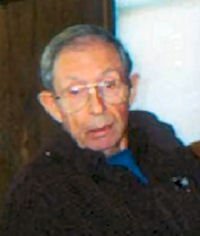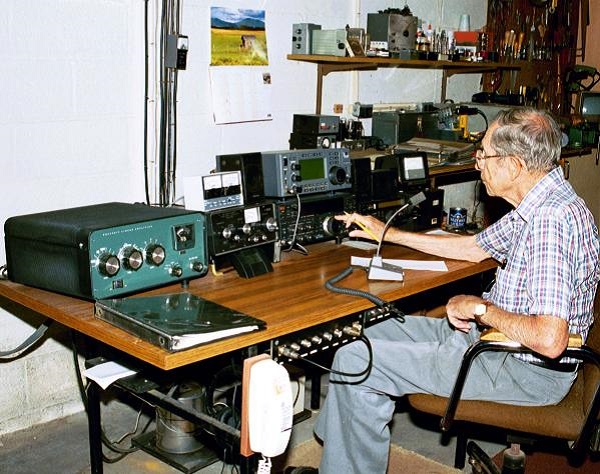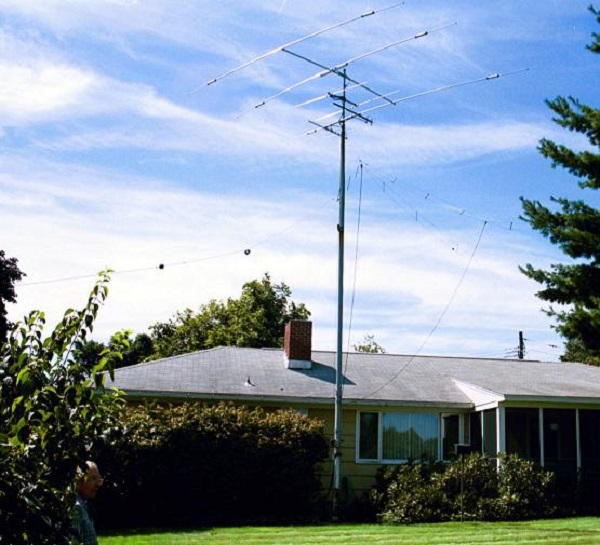 |
Alfred 'Al' Obrist Dewitt, NY QCWA # 04022 Chapter 29 |
Alfred Obrist, passed away peacefully at his home in DeWitt on Monday, October 22, 2018. Born in St. Gallen, Switzerland, he lived in the USA from age 5.
Alfred was predeceased by his wife, Helen and daughter, Lisa in 2012. He is survived by his sons, Larry and Peter, both of whom also live in the area.
Al served in the US Navy during WWII and founded and ran the Obrist & Appel Landscape Architecture.
He was an avid hiker with the ADK Onondaga Chapter and one of the group's '46ers, and was a member of May Memorial Unitarian (Universalist) Society from 1955 through to his death in 2018.
There will be a Memorial Service, November 17, 2018, 10 a.m. at May Memorial Unitarian Universalist Society on 3800 E. Genesee St. (In Syracuse. Contributions to May Memorial in Alfred's name.
Date of Death: October 22, 2018
Published in the Syracuse Post Standard from Oct. 31 to
Nov. 4, 2018
- - - - - - - - - - - - - - - - - - - - - - - - - - - - - - - - - - - - - -
Hi Bob,
To update your information about Al Obrist, yesterday I received an email from another QCWA member that indicated that Al had passed away at home yesterday. As always, I'll watch for the obit in the Syracuse paper. It will likely appear tomorrow, and I will send it to you. I believe that he was the last of the founders of Chapter 29. Sorry to be the bearer of sad news. Hope you are well!
73,
Gary WB2SER
Secretary Chapter 29
- - - - - - - - - - - - - - - - - - - - - - - - - - - - - - - - - - - - - -
Why did you get interested in amateur radio?
I was a senior in high school in Lynbrook on Long Island and I had always been interested in science and technology. The cutting edge technologies in those days were radio and aviation. The problem with aviation was the cost - I couldn't afford an airplane. Radio on the other hand, could be fairly inexpensive if you scrounged components. So in 1935 I passed the test and became licensed as W2IYR. My elmer was W2VL.
My first on the air contact was on November 14, 1935 and was with W2IBW - a friend of mine in the same town. I was using a homebuilt station with the receiver being a two-tube regenerative unit. The transmitter was a Hartley oscillator, operating on 3.5MC with a power input of 12 watts. Immediately after that, I got a crystal from a friend, tore my transmitter apart and rebuilt it with a 47 driving a 45 - power jumped up 50% to 18 watts. My second contact (first with the new transmitter) was also with W2IBW - on November 30th and on a frequency of 3.750KC.
After that I continued to slowly upgrade my equipment. By 1938 I was using a two-tube receiver with a 58 and a 56, and a two-tube transmitter with a 6L6 driving an 807. Most of my contacts were on 80 meter CW but with the antennas and power I was running, the majority of my contacts were in the northeast - I think that Ohio was the farthest west that I ever worked.
And after high school?
When I graduated in 1936, I came to Syracuse to attend the Forestry College and graduated in 1941 with a degree in Landscape Architecture from Syracuse University. That was back in the days when tuition was a mighty $125 per year!
After graduation I applied for a commission in the Navy but they said I was too thin. So I took a civilian job with the Army Corps of Engineers. My first job was surveying in the jungles of Trinidad. Luckily I had brought along a pair of LL Bean boots and they protected me from the snakes - we'd kill a bushmaster every week or so. After Trinidad came Bermuda and being in charge of the water supply for an Army air field.
After several more assignments I came back to the states. Guess what, the war was on and I wasn't too skinny any more - they reclassified me as 1A. At the Brooklyn Navy Yard I applied for the radio program and on January 4, 1944 I boarded the train for Camp Sampson on Seneca Lake. After basic training it was off to Gulfport for technical training and then to Chicago for hands-on radio training.
Following the 11 months of training I was sent overseas and arrived in Casablanca on VE Day - traveling in 3-decker bunk bed luxury on the Queen Mary - along with about 5,000 other servicemen. From there it was off to Naples where I was stationed in Carditelo. That was a major HF communications center for the European Theatre of Operations and was manned by the Navy, Army and troops from England, Australia and New Zealand. After Carditelo I went to Port Lautey in French Morocco and then back to the US where I was mustered out in April of 1946.
And immediately returned to Syracuse?
Not quite. I had known Helen since about 1940 and in 1946 she was living in Seattle - so that's where I went - and we were married. If you work the math you can tell that we're coming up on our 58th wedding anniversary. From then until 1953 I had jobs in several different places, including State College, PA and Cleveland, Ohio. In 1953 I returned to Syracuse, eventually starting my own firm where I worked till I retired in 1983. It was during that time that I changed to the N2AO call in 1976.
These days?
I still operate frequently, usually making 3 or 4 contacts every week. Of course now I'm not limited to 80 meter CW as I have capabilities on all the bands from 80 meters up through 70 cm. I can operate CW but I never enjoyed that mode as much as some of the other folks do so I mostly operate SSB. I've tried EchoLink and made a couple of contacts but the newer digital modes don't interest me that much. I did make a couple of contacts through Oscar-6 just to see if I could do it but that was about it.
In high school and college I was active in track and cross country. I still like to hike with members of the Adirondack Mountain Club and am Membership Chairman for the local chapter of about 1,800 members. And I enjoy the QCWA meetings of course - and trying to figure out what Von Campbell is doing with all of our money!

